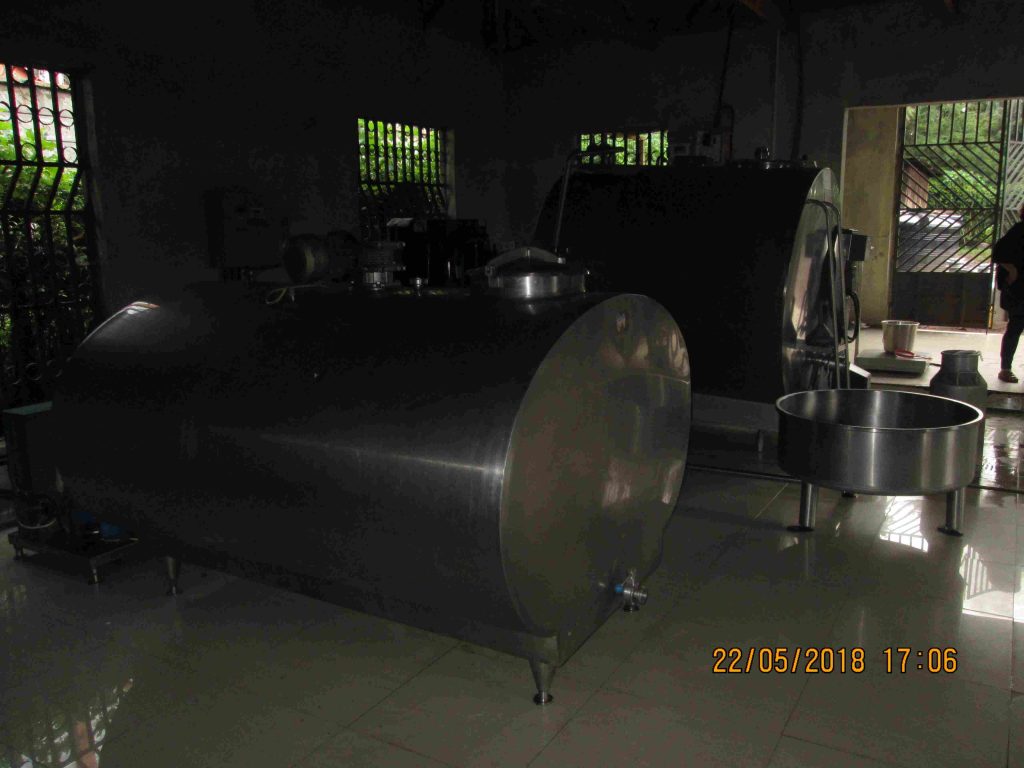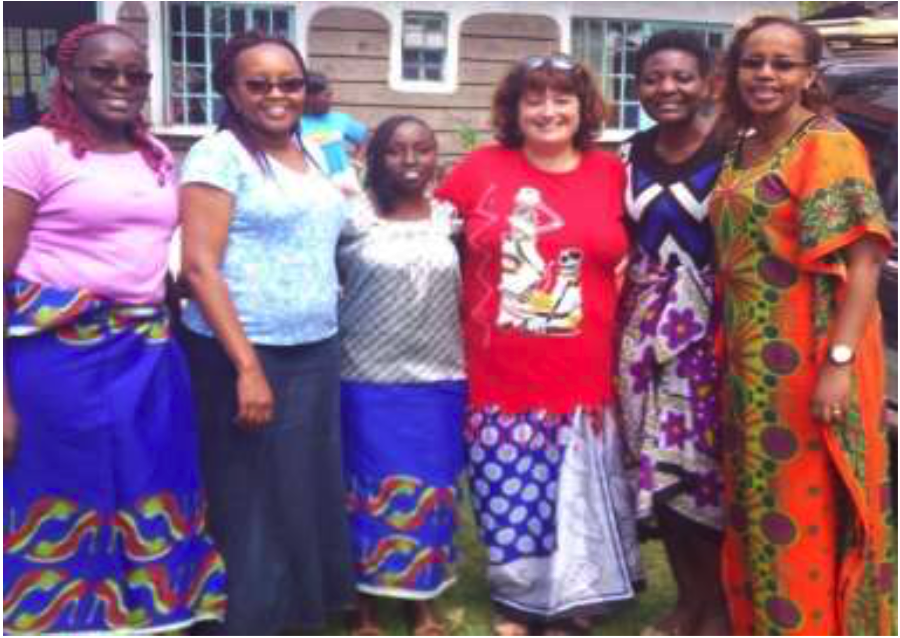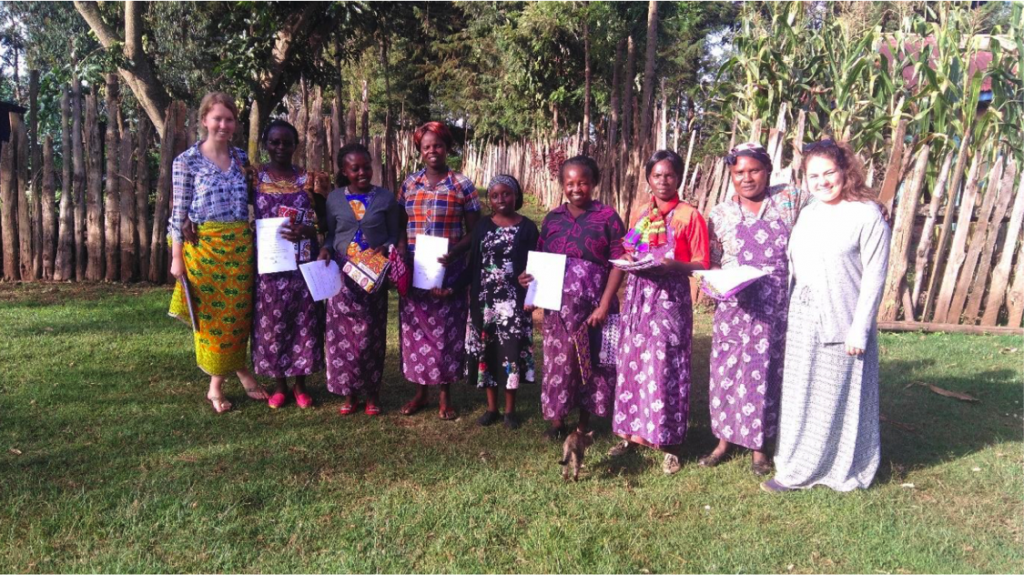Success Story #1 : The county government had ear-marked some funds to support Dairy Groups in the county, with the aim to enhance their capacity to handle more milk purchases from farmers by giving them a milk cooling tank, but only if the Dairy Group built a new building for the cooler. The Naari Dairy built the building, contacted the county officials that their building was ready for the new cooler, and they were then told that they were not eligible for the new cooler because they did not handle high enough volumes of milk. The Naari Dairy asked about the volume requirement, and found out that it was more than what they used to handle prior to the QES project initiation (2600 litres/day in January 2015) , but less than what they are currently handling (6000 litres/day in February 2018). The county records were out-of-date, and indicated that the Naari Dairy was only collecting and selling 2500 litres/day). The Naari Dairy explained and verified that their volumes of milk were now 6000 litres/day , and so they indeed qualified for this new cooling equipment, worth approximately $20,000. The county officials were very surprised to hear of the nearly doubled milk collections in three years, from the same number of farmers, indicating that the farmers were more productive – a testament to the benefits of all of the veterinary and agricultural inputs and activities of the project partners, QES scholars and QES interns. So this is a double success story: 1) the nearly doubling of milk production; and 2) the Naari Dairy receiving a county grant for new milk cooling equipment (and a new generator) as result of #1. More research and training results on the QES veterinary activities will be included in the next annual report.
Success Story #2 : Grace Wanjohi successfully defended her MEd thesis. Grace’s thesis compared the dietary knowledge, attitudes, and practices of women who received a series of nutrition-related text messages on cell phones to augment face-to-face peer-led nutrition training (intervention group, n=24) to that of women trained using the face-to-face peer-led nutrition training only (comparison group, n=29). Here is a part of her thesis abstract: “The study was conducted in Naari, in rural Kenya among women belonging to two self-help groups, where there was a high penetration of cell phone ownership and use. After receiving the nutrition education sessions, women in the cell phone intervention group were sent a series of text reminders about five key nutrition messages twice weekly over five weeks. The five messages were:1) using equal portions of maize and beans to increase protein intake; 2) soaking maize and beans to conserve iron in the food; 3) using two or more vegetables in meals to increase vitamin A intake; 4) taking fruits with meals to enhance iron absorption; and, 5) deworming children on a regular basis. Quantitative data, including women’s knowledge of nutrition messages, their attitudes regarding the importance of the messages, and whether they were practising the recommended behaviours, were collected before and after the intervention during home visits via questionnaire. Qualitative data regarding the intervention group’s perceptions towards the intervention were collected through individual interviews and focus group discussions. Results indicated that nutrition messages relating to 1) iron (p=0.0008); and 2) deworming (p=0.05) were considered more important in the intervention group than the comparison group after the intervention. Similarly, a higher proportion of the intervention group reported implementing practices relating to increased consumption of protein (p=0.009) and vitamin A (p=0.02) than the comparison group. Although there were no significant improvements in the intervention group’s knowledge, this group was generally more knowledgeable than the comparison group, before and after the intervention. Results suggest that including a cell phone ‘booster’ to nutrition education sessions can contribute to positive changes in nutrition-related attitudes and practices.” These results would suggest that the cell phone messaging could be a very useful adjunct to training methods to remind people of important messages delivered face-to-face, so that they are encouraged to regard them as important, and to implement them in their daily practices. We found this to be an encouraging success story on the human nutrition training portion of the QES project.

Success Story #3: Anne Shileche successfully defended on April 6, 2018. Anne’s study evaluated the impact of our integrated research and development project on the emotional empowerment and civic engagement of women farmers in Kenya, and thus evaluated both the human nutrition and dairy cattle/veterinary components. Here is a part of her thesis abstract: “The project, with NGO and academic collaborators, included intervention programs in human nutrition and dairy cattle management in the Naari region of Kenya from 2015 to 2017. This mixed methods study primarily used random sampling to select participants from the nutrition (n=23) and dairy (n=20) intervention groups, and a control group (n=20) of the project. Data were collected in three phases in 2017: (1) a survey of women farmers; (2) in-depth interviews; and (3) focus group discussions. Descriptive statistics, and univariable and multivariable logistic regression models were used in the analyses. Findings revealed that intervention group participants’ level of worry in the long-term (during the last 3 years) was lower than the control group, while controlling for demographic differences between groups in the final models. In addition, the overall civic engagement levels of women in the study increased in the long-term, and the intervention groups increased more than the control group, while controlling for demographic differences between groups in the final model. A significant relationship was found between women’s emotional empowerment (specifically, feeling extremely hopeful over the last 3 years) and increased overall civic engagement over the last 3 years.” These results would suggest that the efforts of the project partners, QES scholars and QES interns not only improved the human nutrition and cattle productivity, but that there were significant spin-off benefits from these improvements in terms of emotional empowerment and civic engagement among the primarily women farmers in the Naari area.

